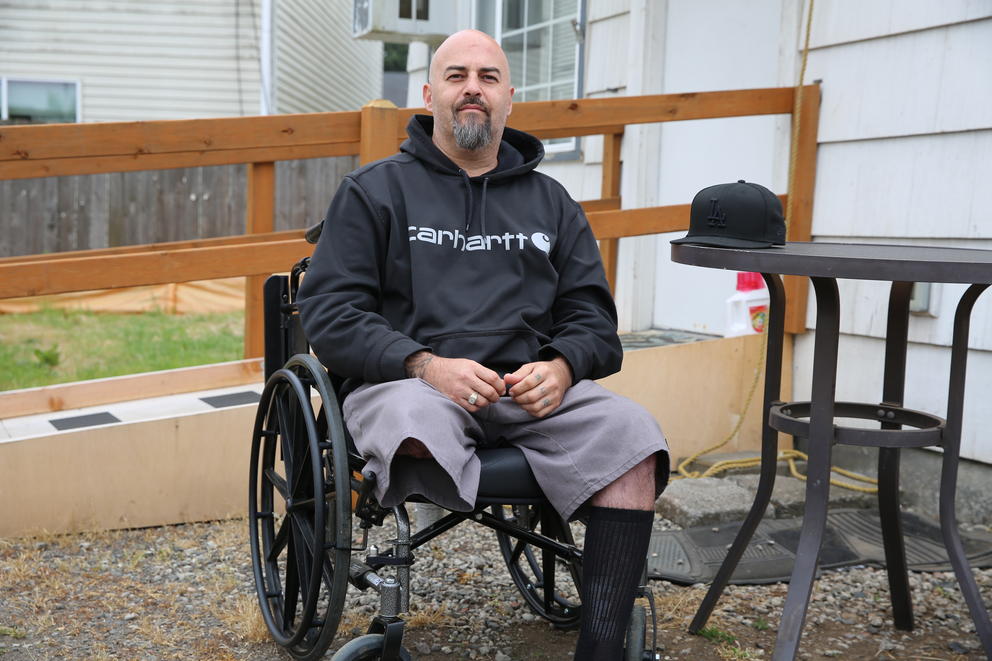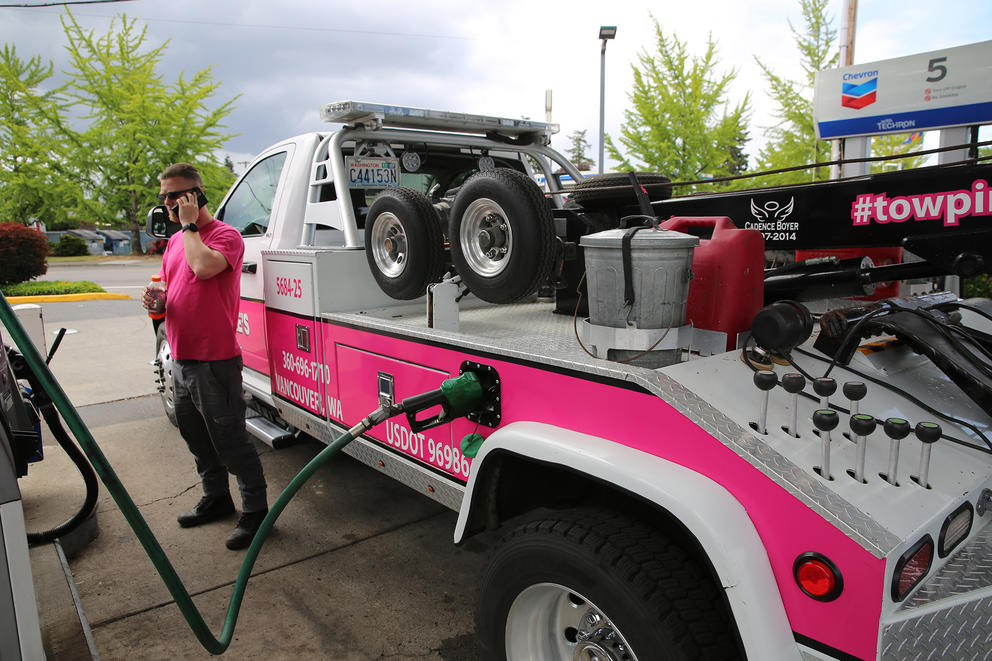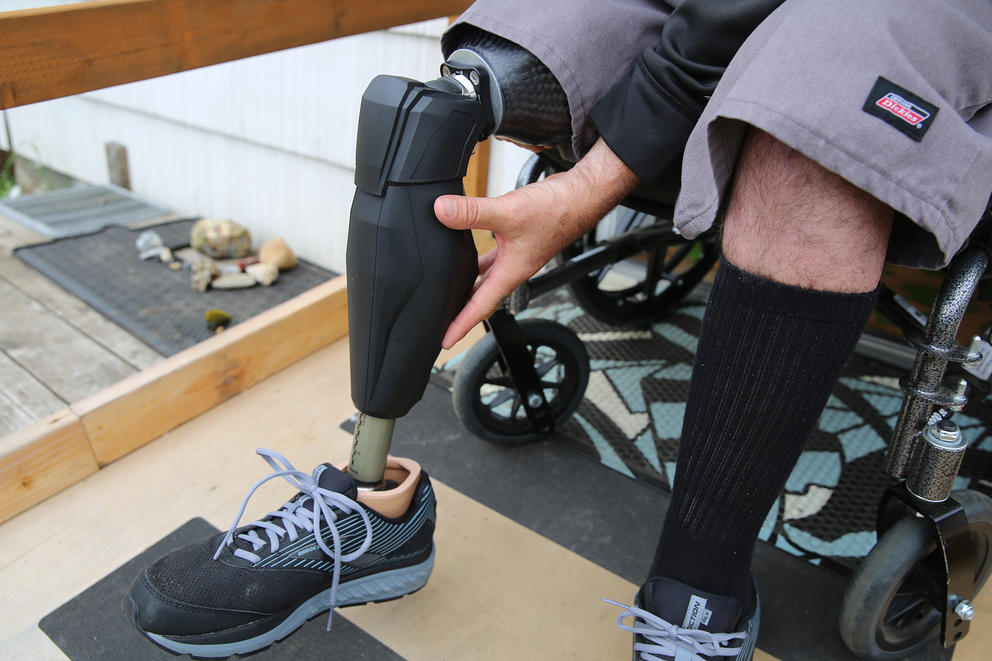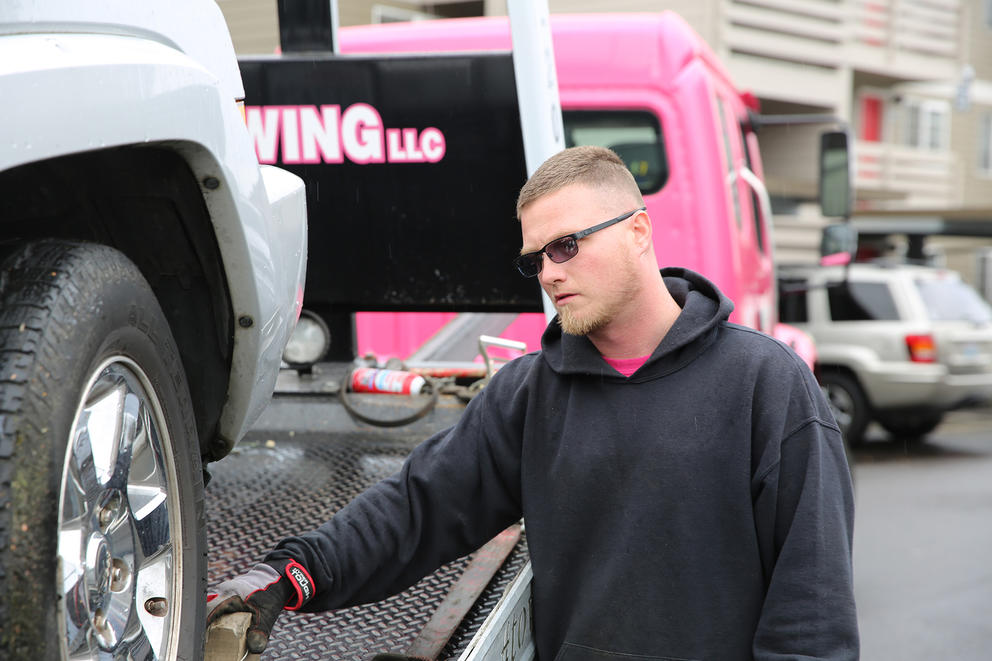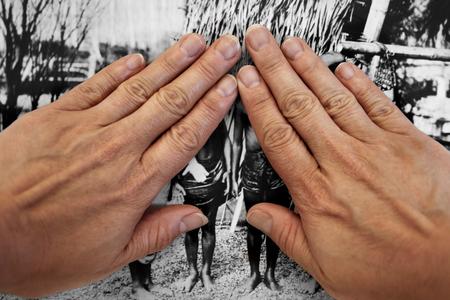He was about to put her SUV on his flatbed to take it off the freeway and change the tire somewhere safe when a passing vehicle plowed into him.
“I’m pinned between two cars. I don’t know what’s happening,” Rios said. “But I’m feeling the hottest burning sensation. In my mind, it’s not real, it felt like a movie. And I’m being pushed across the ground.”
These days, his buddies are reluctant to ask what happened. They don’t want to pry. He says he can’t get the memories out of his head. They come in flashes. It’s loud. He’s angry about being hit, confused because he can’t seem to stand up and exasperated that cars continue rushing by.
Someone takes a belt and ties it around what’s left of his leg.
Today, he doesn’t handle loud noises well.
“It’s the boom,” he said, “the impact.”
But Rios wants to tell his story, because he wants drivers to slow down and pay attention when they pass a tow truck.
Five months later, state police are still investigating the crash, and Rios is adjusting to life with a prosthetic leg, relearning how to do basic things like driving and playing with his son. “Mentally, physically, emotionally ... I’m dealing with it,” he said.
This story was originally published at Oregon Public Broadcasting on June 16, 2021.
The U.S. Centers for Disease Control and Prevention estimates that the risk of dying as a tow truck driver is 15 times higher than in other dangerous private industry jobs, such as welding and construction. And most states, including Oregon and Washington, require drivers to move over and slow down when they see a tow truck. But many people don’t, despite the threat of a $140 ticket.
“You get some people that are just in a hurry, texting and driving, not paying attention. Putting make-up on,” said driver Dan Carroll, who also works for Chappelle’s Towing in Vancouver.
Tow truck drivers say they deal with death and injury on a regular basis, whether it’s the motorists they’re dealing with, a pedestrian or someone in the tight-knit driver community. It’s an ever-present fact made more tangible by the location of their offices, usually on the side of a highway with traffic speeding by at 60, 70, 80 miles an hour.
On a recent ride-along, Oregon Public Broadcasting parked on the side of Washington State Route 14 with Carroll to see how motorists react. A quick and unscientific count showed that less than half the drivers moved over during 20 minutes at the side of the road. Carroll thinks that’s because drivers just don’t regard him as an emergency worker.
“I’ve gotten into arguments with friends. They don’t think so, they say ‘no,’ because we’re not police, paramedics or fire trucks. I’m assuming maybe because we don’t have blue lights,” he said.
“But there are times when we get called first, before police or anyone else, and we get to the scene first. So I would consider us first responders.”
Legally, tow truck drivers are not considered first responders. But they are “emergency” responders — meaning they’re allowed to drive along the hard shoulder to get to an accident, and drivers must slow down and move over as they pass.
Carroll likes helping people, and he earned $70,000 last year. But the job is hard and dangerous, and it comes with a 12-hour day, five days a week, plus the expectation that he’ll jump out of bed anytime someone needs towing off the freeway nearby.
Carroll takes precautions, like wearing a safety vest and lighting flares when he pulls over. He’s cautious about using the flashing lights on his truck.
“People driving by go, ‘Oh, pretty lights!’ And they swerve into it,” he said.
Vancouver’s tow truck drivers have been particularly hit hard over the last six months. In addition to David Rios losing a leg, driver Arthur Anderson and two others were killed in April near Castle Rock. In December, Chris Amedio of Garza’s Auto Repair, caught a passing car striking the side of his truck on an in-cab video.
“I just got hit!” he screams on the tape.
He’s OK now, but thinks he could have died if he hadn’t jumped at the last moment.
“Towing fatalities are at the top of the list followed by firefighters, police officers and EMTs,” said Kelly Just, with AAA Washington.
She’s working with the Washington State Patrol and the Washington Department of Transportation on a new educational campaign called “Slow Down, Move Over.” She thinks the COVID-19 pandemic has made driving more dangerous with more speeding and distracted drivers.
“It’s the emptier roads,” she said. “Nobody was driving, so people thought, let’s see how fast we can go.”
Back in the tow truck, Carroll works quickly to pick up an illegally parked car at an apartment complex. His head stays on a swivel as he keeps an eye out for the owner. He thinks this part of the job, enforcing parking rules and laws, is one reason people don’t slow down for tow trucks.
“We have a love hate relationship with the customers,” he said. “They hate us until they need us.”
Carroll’s buddy, Rios, is learning to walk again on his prosthetic leg. He doesn’t think he’ll ever be able to work as a tow-truck driver again. But he hopes maybe he’ll be able to find work warning new recruits about safety.

